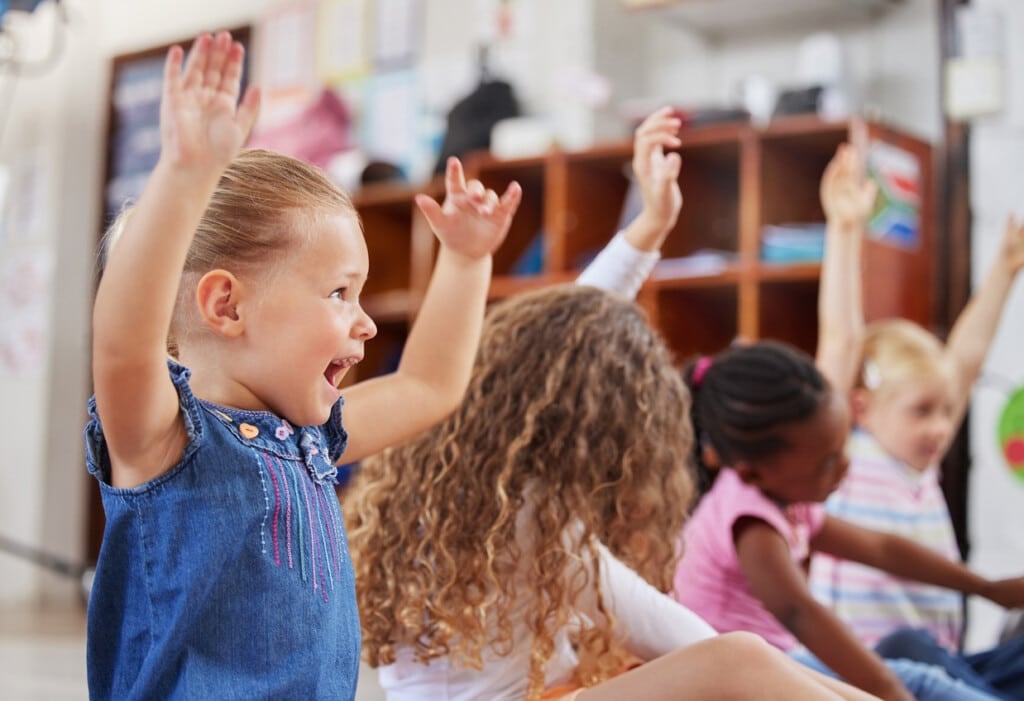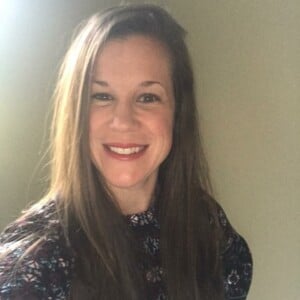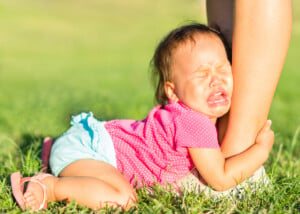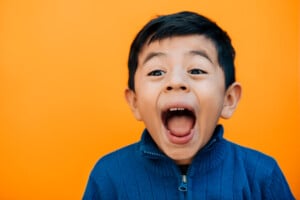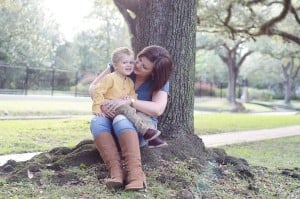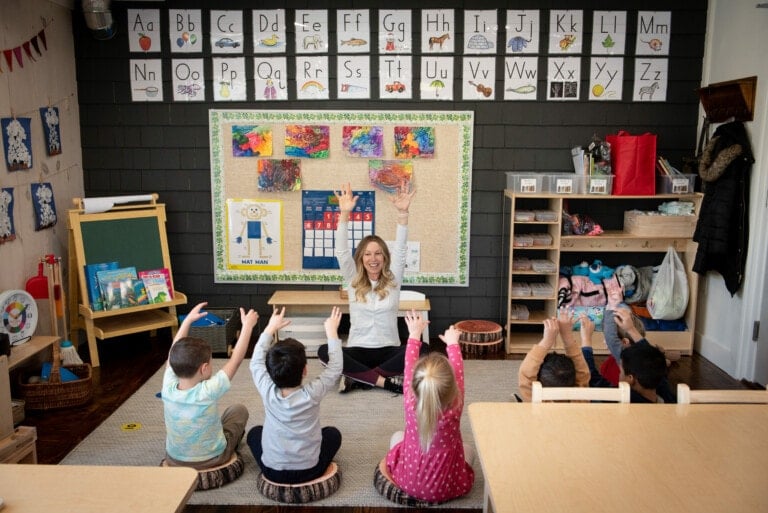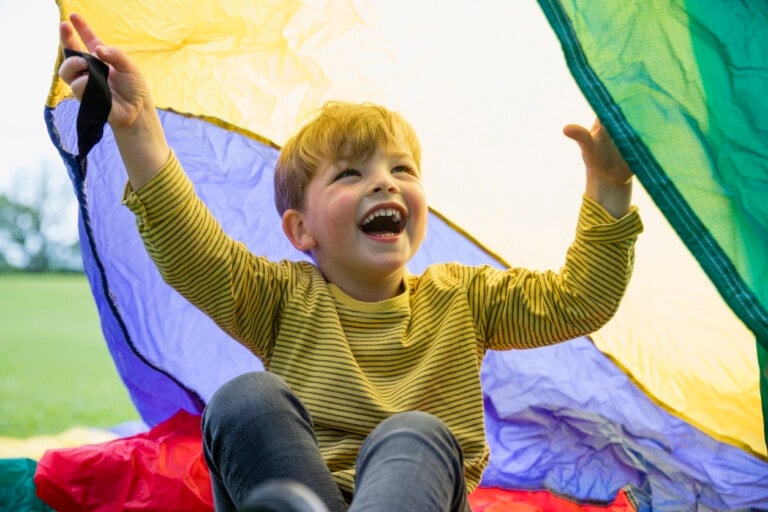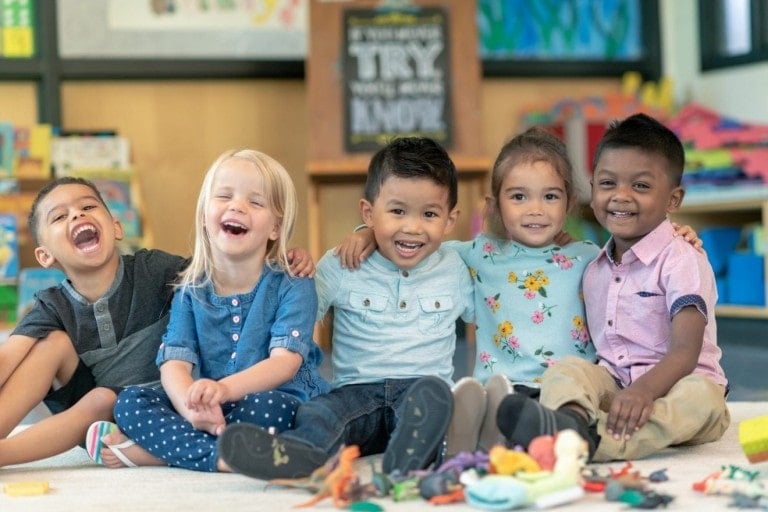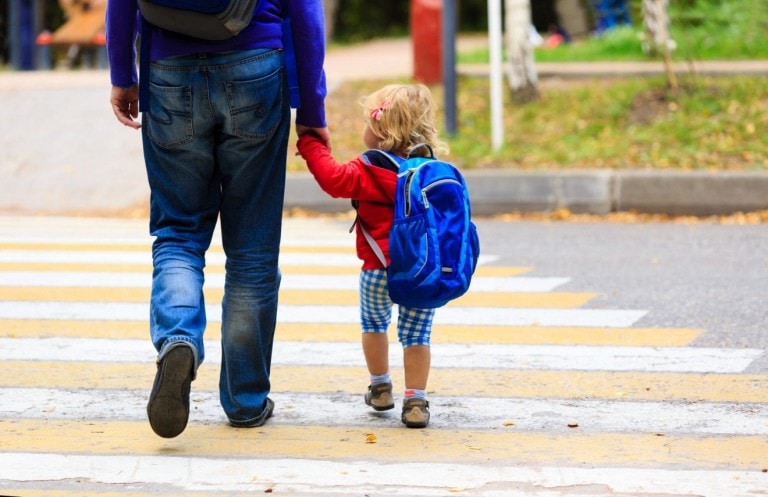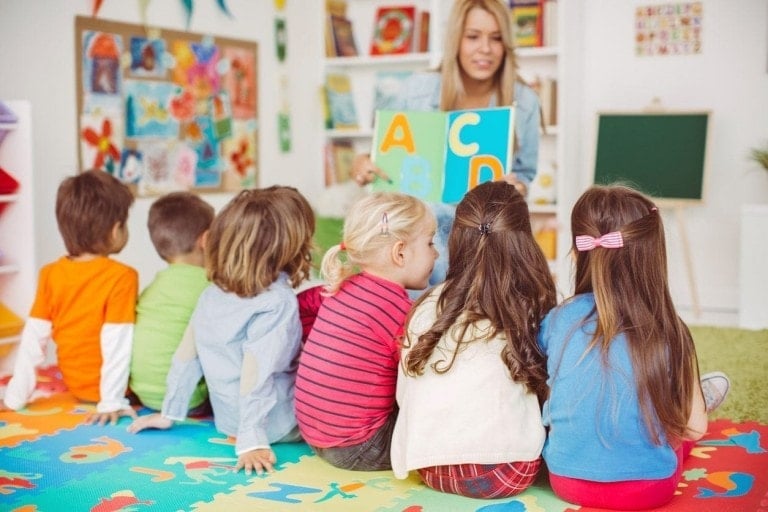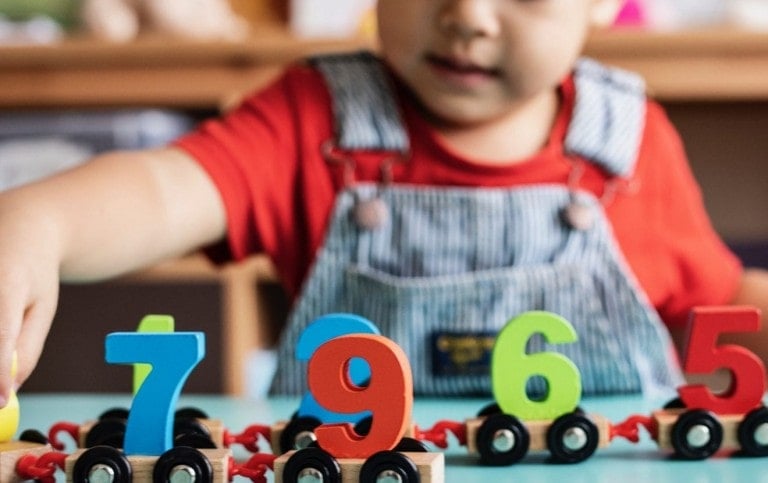Much more goes into a preschool curriculum than reading, writing, and arithmetic. Kids work on early literacy skills in a pre-K curriculum, like identifying letters and the sounds they make. They’ll write their names and the alphabet, and at the beginning of basic words, they will learn how to spell. They will count and understand what the number 3 looks like and practice shapes and patterns.
However, traditional academics are only one piece of the larger puzzle that makes up the lessons of a preschool classroom. Preschool is where three- and four-year-olds learn to share the play kitchen with friends, wait their turn to speak, and empathize with another child who is sad or frustrated. A solid pre-K curriculum incorporates all these things and much more, but there are some fundamentals that preschoolers start to learn at this age.
Preschool Curriculum Fundamentals: Academics
Since preschool is kindergarten prep, the curriculum will have an “academic” focus, although it may not resemble what older kids see in math, reading, writing, or science. Preschool kids aren’t likely to sit at desks for long or write much. They won’t memorize math facts yet or take quizzes like older elementary school children will. But their school day will be academically focused in a way suitable for wiggly 3- and 4-year-olds with short attention spans.
This is the age when many kids are just learning all their letters and numbers, how to sing their ABCs, and how to count. Literacy guidelines for a pre-K curriculum include exposing children to print books and teaching them that the words they see have meaning. Children learn how to hold a book and turn pages, and that reading goes from left to right. They’ll also identify letters, start matching them up with the sounds those letters make, and even try to spell out their names at this point.1
The Alphabet Principle
At this stage of development, teachers introduce basic concepts like the Alphabet Principle, which is the understanding of a systematic relationship between letters and sounds, like how the word “cat” has three sounds and is written with three corresponding letters. That means children will see a picture of a cat or hold a stuffed cat, then see C-A-T written out, say all three letters, and hear all three letters, therefore seeing the relationship between the image, the letters, and the sounds.1
Math Concepts
Preschoolers are also exposed to beginning math concepts like, “How many animal crackers do you have at your table for a snack?” and having them count each before eating. Also, shape recognition begins at this age, a preschool math concept. They might also learn the first steps in measuring objects and start discussing what things weigh. And preschoolers learn, see, and identify numbers and what they mean. For example, seeing the number 4, the word “four,” then a row of four circles, or a group of four elephants in a book.1
Hands-On Science
Preschoolers are also exposed to early science concepts in a hands-on, physical way. How many preschoolers do you know who have brought home a tiny plant? They plant the seed in a cup of soil, add water, and put their little cup by a window for sunlight. Then, magically, it sprouts. That’s preschool science. Seeing that some things float in water and others sink is science. Going outside to look at the sky and talk about why the sky is blue or collect rain in a bucket and learn about why rain falls—science! Also, children at this early age will be exposed to the language of science. They will start hearing their teachers ask questions like, “What do you predict will happen in our experiment?” and learning what “predict” and “experiment” mean.1
2. Preschool Curriculum Fundamentals: Gross and Fine Motor Skills
As important as academics, gross and fine motor skill development is also a primary focus in preschool curriculum development. Gross motor or large motor skills involve coordinating large body parts and movements. Fine motor skills refer to a child’s ability to control their body’s small muscles for specific functions, like writing or tying a shoelace.2,3
Preschoolers Are Usually Moving
Little bodies are developing and growing rapidly, so they often don’t have the complete skill set at age three or four when it comes to jumping or cutting. That’s why if you peek into a preschool classroom, you’ll usually see the children moving around—they are honing their motor skills. Using scissors or holding a paintbrush at the arts and crafts station helps develop fine motor skills like hand-eye coordination. Running outside, playing with a ball, and skipping with friends help develop children’s muscles and gross motor skills.4
Children may not have separate classes for music, gym, or art in preschool, but a strong preschool curriculum will often include exposure to them. Kids may listen to a wide range of music styles and sing along and dance as well as play their own instruments. They will run, play kickball, jump rope, throw balls, and climb over obstacle courses, burning off energy and strengthening their muscles. They will expand their creativity daily, cutting, pasting, drawing, tracing, and making the most beautiful refrigerator-worthy craft projects they can to take home to Mom and Dad.4
3. Preschool Curriculum Fundamentals: Social-Emotional Skills
Kids in preschool learn to work with others, share, cooperate, and solve conflicts—but their emotions are big! Learning how to work through those big emotions is just as important, if not more so, as learning how to count and write letters in preschool. You can teach a child at home, without the presence of other children, how to write the letter A. But in a classroom setting, they’ll practice writing that A while also learning how to cope with their frustration and sadness and cooperate with other children who also might feel big emotions. Those are life skills that will carry with them throughout all their childhood and adult years.
Social-emotional learning helps children learn how to be kind and empathetic to others, even, and especially, if their peers have challenges that differ from their own. Learning this set of life skills in a pre-K curriculum shows kids that working cooperatively despite hurdles means everyone has value and feels included as you work toward a common goal.5
4. Preschool Curriculum Fundamentals: Communication, Listening, and Memory Retention
By preschool, most children can already “talk” and “listen” because they know many words, speak in short sentences, and learn how to respond when told to do basic tasks. However, the preschool curriculum includes lessons based on enhancing their communication skills, helping them be better “active” listeners, and improving their memory skills.
Kids learn to speak and listen in the classroom in back-and-forth conversations in a pre-K curriculum. They learn to talk, listen to what someone says in response, and then say something back. Preschoolers learn narration, where they can describe something in detail, and free play, where the conversation is natural and organic. Preschool children learn all the pieces of meaningful conversation as they prepare for kindergarten and beyond.6
Active Listening
Children learn the importance of active listening skills in a preschool curriculum, including:6
- Understanding what other people are saying when they speak.
- Detecting, manipulating, or analyzing the auditory aspects of spoken language
- Enjoying listening to stories
- Following oral instructions
Memory and Information Retention
In addition, memory will be a valuable skill for kids as they grow and become more critical as they get older and are expected to retain higher volumes of information in school. That’s why preschool teachers focus on memory-enhancing activities in a pre-K curriculum. They know muscle memory is good for the brain, like any other body part.7
Simple and fun memory-building activities include:4
- Memory card games
- Circle memory games such as “I went to the store, and I bought a …” Each child has a turn to add an item but must first recall the entire list before adding their item.
- List games such as “Categories.” Pick a category (like fruits) and go around the circle, asking each child to add the name of one fruit. No fruits may be said twice, so children must remember which ones were already mentioned.
5. Preschool Curriculum Fundamentals: Independence
A core skill preschoolers learn in a pre-K curriculum is how to be away from their parents or guardians. They learn how to work independently and think for themselves, and, most importantly, when school is over, they go home and return the next day.
Practice and Prepare for Separation
However, the actual goodbye can be challenging for some little ones, so here are a few tips to help kids get more excited about that independence and less sad that Mom and Dad won’t be next to them at preschool.8
- Show them the school first: Before the first day, take your child into the classroom and show them around. Let them play with the toys and become familiar with their new setting.
- Be positive: Maintain a positive attitude when dropping your child off at school. If the adult dropping them off seems upset or worried, the child is more likely to feel the same.
- Have a secret handshake: Consider a special secret handshake or wave that’s just between the two of you, or tuck a special object in their backpack like a wishing stone or a photo, or a note in their lunchbox to let them know you love them and will see them soon.
The more you encourage your child and build up their confidence that they can do this and that school is a fun, happy place, the more likely this new time away from you will become a positive change in their life rather than an upsetting one.
Preschool curriculums are full of imaginative play that connects early literacy and writing concepts, science, and math. While outside exploring the grounds around their school, they might talk about the weather (science!), practice sharing what they see (communication!), and actively listen to what their peers share. Plus, they are moving their bodies and strengthening their motor skills. Preschool classrooms are busy places full of laughter, learning, sharing, and kindness. Most kids have so much fun that they don’t even realize they are learning something every minute they’re there.













